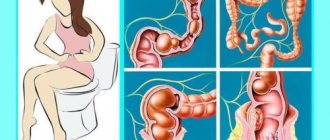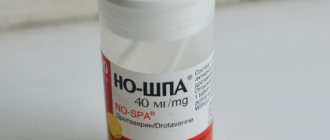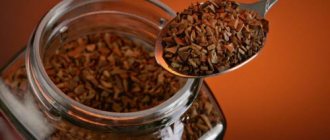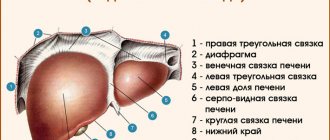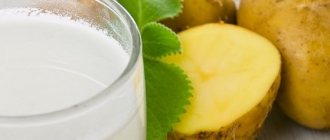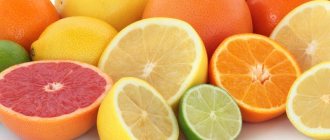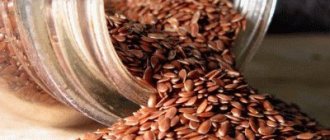In case of persistent remission of pancreatitis, you can drink this drink, following several rules:
- You should prepare the juice yourself from high-quality red beets, preferably grown in your own garden,
Before drinking, place freshly squeezed juice in the refrigerator for 2–3 hours: this way the biologically active substances will reduce their damaging effect on the gastrointestinal tract,
Beetroot dishes and drinks should be added to the diet for pancreatitis gradually, in consultation with a gastroenterologist or nutritionist. If this vegetable is consumed incorrectly, instead of the beneficial effects of beets, an exacerbation of the disease will develop. Eating beets and drinking juice from them is allowed only after achieving stable, long-term remission of pancreatitis. At the stage of acute inflammatory process, beets are a prohibited product.
Beet salad for pancreatitis
Beets (1 piece) must be washed and baked in the oven. Cool, peel, cut into small cubes. Boil potatoes (5 pieces) in their jackets, cool, peel and cut into small cubes. Potatoes and beets should be approximately the same size when cut. Rinse the parsley in warm water and chop finely.
Mix beets with potatoes and parsley, season with salt, sesame or olive oil. Mix everything thoroughly and transfer to a salad bowl. Garnish with parsley or dill.
How to properly use beets for pancreatitis of the pancreas
Digestive diseases are widespread, which is associated with an increase in toxic, drug and viral exposures. Among the frequently diagnosed diseases, pancreatitis is not the least important. This is an inflammation of the pancreas tissue, which manifests itself as unbearable pain in the lower abdomen. During the acute period, patients are shown a gentle diet, in which, according to some gastroenterologists, beets are one of the main food products.
Is it possible to eat beets if you have pancreatitis of the pancreas or not, in what form will the vegetable be useful and when can it harm your health, which beet dishes are the healthiest and tastiest - we will consider further.
Cooking beets
To preserve the benefits of the root vegetable and facilitate digestion in the stomach, it is necessary to adhere to some nuances of preparation.
- Before boiling the product, wash it well. The root vegetable is cooked under the lid for at least 2 hours.
- Cook the beets with the peel intact; if the root vegetable is large, you can cut it.
- It is prohibited to add acetic and citric acid or kvass to the water when cooking the product. Although many people use this method to preserve the color, in the case of pancreatitis, boiled beets with such manipulation will cause an attack.
Before eating, boiled beets are grated or crushed in a blender to avoid irritation of the gastric mucosa. You can also bake it in the oven, so it will become juicier and softer.
Eating beets for acute pancreatitis
If the disease occurs in an acute stage, diet therapy is prescribed, which involves complete abstinence from food. After 20 days, the patient requires complete replenishment of lost vitamins and microelements. To do this, low-calorie foods (vegetables) are gradually introduced to the patient with pancreatitis.
It is forbidden to eat fatty foods, since they are difficult to digest by the stomach and intestines. In addition to biologically active elements, the root vegetable contains fiber, which is difficult to digest.
When the body is completely healthy, consumed plant foods are beneficial. Beetroot promotes the flexural contraction of the colon muscles. The stomach works in a natural mode and digests consumed foods well. Although in the acute form of the disease, fresh and boiled root vegetables can cause a deterioration in well-being.
So, when consuming beets during acute pancreatitis, even a boiled vegetable can cause complications in the digestion of food products, therefore during an exacerbation of the disease, you cannot eat the product in any prepared form.
If the doctor’s recommendations are not followed, the vegetable will complicate the condition and become a factor in subsequent inflammation of the pancreas.
Beetroot and chronic pancreatitis
For the treatment of chronic pancreatitis of the gastric glands, a diet is prescribed, which is designed to be gradually introduced into the diet after the attacks of the pathology have been eliminated.
Following the rules for processing the product, for patients with chronic disease it is introduced into the diet in small quantities. Initially, it is permissible to use 1 tbsp. l. and over the course of several days the portion is increased to 100 grams.
Is it possible to have boiled beets for pancreatitis? In chronic forms of pancreatic disease, it is recommended to eat boiled product. After cooking, beets have a positive effect on the stomach.
But refrain from using vinaigrette if you have pancreatitis. Diced beets in a salad during digestion will load the gland and cause an aggravation. The effect of the product on the body of a patient with the chronic stage of pancreatitis, when taken in an available amount, is favorable.
- Intestinal adsorption occurs.
- The metabolic flow of fats is corrected.
- Pressure increases.
Options for using root vegetables in the acute and chronic stages of pancreatitis
If an acute stage of pancreatic inflammation is detected, complete fasting is prescribed for 20 days. After this, it is necessary to replenish the loss of vitamins and microelements. To do this, vegetables are gradually introduced. It is forbidden to eat rough fatty foods. Such products are difficult to digest in the gastrointestinal tract. Beets, in addition to biologically active and beneficial substances, contain fiber. Because of this, the root vegetable is difficult to digest even when boiled.
In normal health, plant foods are beneficial. Beets help the intestinal muscles contract in waves. At the same time, the stomach begins to function properly, thoroughly digesting food. But fresh and boiled beets for acute pancreatitis can only worsen the condition. It adversely affects mucosal tissues damaged by inflammation, causing pain. Therefore, you should temporarily stop eating the vegetable.
At the permanent stage and after the relief of pancreatic attacks, the diet is gradually expanded. Boiled beets are administered a week after the last exacerbation has been suppressed. Small quantities of the root vegetable are consumed immediately. Then the volume of boiled vegetables eaten gradually increases, bringing the portion to 100 g per day. The only condition is compliance with the requirements for culinary processing of the product:
- Cooking beets should take at least two hours. This rule must be observed especially if a whole medium-sized vegetable is cooked. It should be washed first.
- It is better to cut large beets in half or into four parts before cooking.
- When cooking root vegetables, you should not add vinegar, lemon, sour kvass, or citric acid to the water, which is done to preserve the brightness of the color of the beets. In a patient with pancreatitis, such dietary supplements will provoke an attack.
- Optimal heat treatment of the root vegetable is achieved by baking in the oven or cooking in a double boiler. This method allows you to obtain a soft consistency without loss of juiciness.
- You need to eat beets in pureed form or as a puree after processing in a blender, which will reduce the load on the digestive tract and reduce the risk of irritation of the affected organ.
- You should not eat vegetable salads where the ingredients are cut into cubes, for example, vinaigrette.
- You need to boil and bake the root vegetable with the peel in a covered container.
When can you eat beets with pancreatitis?
It is not advisable to include beets in the diet during the acute period. At this stage, the patient is advised to fast, and any food can harm the body and provoke a new attack of pain. Boiled red beets are allowed for chronic pancreatitis at the moment when the disease goes into remission.
The vegetable is consumed after proper heat treatment, starting with one teaspoon, gradually increasing the portion to 100 g per day over several days.
Drinking beet juice during the acute period is also prohibited, despite the fact that it does not contain coarse fibers. A high content of acids and sugar has an adverse effect on pancreatic tissue and can cause diarrhea, diarrhea, and lower blood pressure. In chronic cases of the disease, beet juice should be taken during a period of stable remission.
In addition, it is recommended not to be consumed in pure form, but diluted with other vegetable juice (cabbage, carrot, potato). The drink should steep for at least an hour and should be taken every two to three days. The daily intake should not exceed 100 ml.
Important! If an adverse reaction such as nausea, vomiting, or loose stool occurs, beet juice should be excluded from the diet, as it may be a sign of an allergy.
Is it possible to eat beets for pancreatitis: chronic inflammation
The root vegetable, which has undergone proper heat treatment, is an important component of the diet of patients with chronic pancreatitis. It is recommended to start adding vegetables with one tablespoon, gradually increasing the volume.
Is it possible to eat boiled beets if you have pancreatitis? It’s not just possible, but necessary! It is after the cooking process that beets have a beneficial effect on the organ. The consistency becomes soft, but this is not enough. Beets must be chopped or pureed. Both a grater and a blender can handle this if you are planning to make vegetable puree.
But you should refrain from traditionally adding beets to salads using cubes. When digested, these pieces will all put a strain on the gland, which can lead to an aggravation.
Boiled beets for pancreatitis do not tolerate the addition of vinegar, citric acid and other tricks to the water to preserve the intensity of the beet color. Keep in mind that whole root vegetables are boiled for at least two hours. If large beets are cut in half, the cooking time is reduced. In addition, it is recommended to bake or steam beets.
Daily volume – no more than 100 g. chopped beets.
Recipes for the most healthy dishes with this product
Beets are consumed as an independent product or used as part of various dishes. It is boiled, steamed, baked. The finished product is crushed using a blender, grater, and ground through a sieve - the main thing is that the output is a mushy consistency.
Let's consider the most popular dishes with it, which are allowed during the period of stable remission.
Boiled beet salad
To prepare the dish you will need 1-2 medium-sized vegetables. Place the clean beet in a saucepan with cold water and cook until tender. If these are large fruits, then first cut them into equal pieces so that the beets cook faster. The average cooking time is 1.5-2 hours.
Check readiness with a fork. Next, peel the cooled vegetable and chop it on a grater, season with vegetable oil, and mix. To improve the taste, you can add a little boiled carrot or peeled apple, also finely chopped.
Beetroot
For pancreatitis, beetroot soup is prepared in water or light meat broth, but the meat itself is not consumed.
Based on a three-liter pan you will need:
- 2-3 medium-sized beets;
- 4 ripe medium-sized tomatoes (if small, then 5-6);
- 2 carrots;
- 2 onions;
- Bay leaf;
- greens: parsley, dill;
- beans in their own juice (optional).
If you want to get a more nutritious and tasty beetroot soup, cook it with recycled meat broth. It's better if it's chicken breast or thigh. Wash the chicken, add water, place on low heat, bring to a boil, and drain.
We wash the meat again under running water, pour purified water into the pan, adding two or three fingers, cook over low heat, periodically removing the resulting foam.
For reference. To add flavor to the dish, after boiling, add a peeled onion, cut crosswise. It is better not to use salt and spices for taste.
While the broth is cooking, prepare the vegetables. Grate the peeled carrots and cut the onion into small cubes. In a hot frying pan in 1 tsp. vegetable oil over medium heat, fry the onion until transparent, add the carrots, and sauté for another 2-3 minutes.
Cut the beet of your choice into thin strips, grind it on a grater or use a blender. When the broth is cooked, add all the vegetables at the same time and cook until tender. At the end of cooking, remove the whole onion from the soup and sprinkle with herbs. Season the serving with 1 tbsp. low-fat sour cream.
There is a simplified beetroot recipe that is no less tasty. Pour finely chopped potatoes and onions, grated beets and carrots into boiling water, cook until tender for 30-40 minutes. Season with herbs. If desired, add 1 tbsp to the serving. l. sour cream with a low fat content.
Delicious recipes
The main rules for consuming this root vegetable for pancreatitis are compliance with the permitted amount of the product and a method of preparation that is safe for the pancreas. Beets should be boiled, baked, stewed or steamed. Heat treatment makes it soft. Boiled root vegetables are well digested, and all useful substances are absorbed.
The first beetroot dish that is allowed to the patient (after a decrease in severe symptoms, a month after an attack of pancreatitis) is a puree of well-cooked, thoroughly chopped beets. You need to start eating vegetables with small portions; for the first time it is advised to eat no more than 1 tablespoon of puree, after which you need to monitor the patient’s body’s reaction for one day. If you feel well, the portion of beets is gradually increased to 100 g per day. If complaints of abdominal pain, increased gas formation, diarrhea arise again, beets are excluded from the diet for a longer period.
When introducing beets into the diet of a patient with pancreatitis, the requirements for culinary processing of the product should be strictly observed:
- Cook a medium-sized vegetable for at least two hours;
- Cook large beets after cutting them in half or into quarters;
- Boil the root vegetable without adding vinegar, lemon or sour kvass. The addition of these substances allows you to preserve the color of beets during heat treatment, however, they can cause an exacerbation of pancreatitis and cause an attack of the disease;
- Beets should be prepared by baking in the oven or in a double boiler. This heat treatment allows you to preserve all the useful components of the vegetable, obtain a soft consistency without loss of juiciness;
- You need to cook the beets with the skins on in a covered container.
Currently reading: The best omelet recipes for pancreatitis in a slow cooker, oven and in a frying pan
During the period of long-term remission of inflammation of the pancreas, beets are included in the menu of a patient with pancreatitis, preparing tasty and simple dishes from it that are good for health.
Baked beets
There is no need to peel the root vegetable. The beets need to be cut in half, each slice should be greased with olive oil, placed on a baking sheet with the unpeeled part facing up, and covered with foil. The baking sheet should be placed in the oven, preheated to 200 degrees, and the dish should be baked for 40 minutes. Baked beets are peeled, cut into small pieces and grated, used as a side dish for dishes made from lean meat, poultry, and fish. You can also eat baked beets as an independent dish for lunch or dinner.
Beetroot
To prepare dietary vegetable soup, you need to take 3 medium-sized beets, carrots, and onions.
All vegetables need to be washed and peeled. Beets and carrots need to be cut into small strips (you can grate them), the onion should also be chopped finely. Place the beets in a saucepan and add 3 liters of water and place on low heat. Chopped onions need to be sautéed with carrots in a frying pan for several minutes with the addition of a small amount of vegetable oil (about 1 tbsp). The resulting stew is added to the pan with the beets. At the end of cooking, add a pinch of salt and finely chopped parsley (dill), cover with a lid and leave on the fire for another 3 minutes. Afterwards, the soup is infused for 5 minutes. The dish is served with the addition of sour cream.
Dietary beet salad
Boiled beets need to be finely grated, season with low-fat kefir, and add a little low-fat cottage cheese.
Soup – puree with beets
You need to take 2 medium-sized beets, carrots, 2 potatoes, an onion and 50 g of parsley. Beets, potatoes and carrots should be washed well, cut into pieces and boiled until soft. There is no need to drain the broth after cooking. All vegetables should be chopped in a blender, pour the resulting puree into a saucepan, add vegetable broth, onion previously sauteed in vegetable oil, finely chopped parsley, salt and cook for 5 minutes over low heat. You can serve the soup with homemade croutons and a tablespoon of sour cream.
Beet juice
Beet juice is good for the digestive system as a strong laxative. Taking juice from the root vegetable helps cleanse the body of waste and toxins, helps increase the elasticity of blood vessels, normalizes liver function, prevents the development of cancer cells, and normalizes blood pressure. Using beet juice helps normalize blood circulation in the brain, develop memory and concentration. This drink is useful in the postoperative period, as it activates the body's regeneration processes. During this period, it is recommended to take beet juice on an empty stomach, 20 minutes before meals.
The taste of freshly squeezed beet juice is specific; it can be mixed with the juices of other vegetables. Beetroot juice diluted with the juice of pumpkin, cucumbers, and carrots is healthy and tastes very pleasant.
When the pancreas is inflamed, beetroot juice is not recommended to be included in the patient’s diet, since due to the high content of organic acids in beets (including oxalic acid), such a drink can irritate the mucous membrane, increase the acidity of gastric juice and cause an exacerbation of the disease.
The use of beet juice can activate the production of secretions and gastric juice, which negatively affects the condition of the pancreas. With pancreatitis, there is a risk of developing diabetes mellitus and the use of beet juice, which contains a significant amount of sugar, can cause aggravation of the pathological condition and cause a disruption in insulin synthesis.
Currently reading: Pepper for pancreatitis - features of use, tasty, healthy recipes
Drinking large amounts of beet juice can dramatically lower blood pressure, impair circulation, cause fainting, intestinal disorders and pain.
In case of chronic pancreatitis, beetroot juice is allowed to be used, but only in limited quantities, only if there are no disturbances in insulin synthesis and a tendency to diarrhea. The juice should be prepared at home, since store-bought juices may contain harmful preservatives and flavorings.
You can use beetroot juice by following some requirements to prevent the negative impact of the drink on the body:
- Freshly squeezed juice should be left for 2.5 hours in a cold place. This will reduce the activity of substances in it and improve the reaction of the gastrointestinal tract.
- Beetroot juice is best used mixed with other vegetable juices. Juices from beets and pumpkins, beets and carrots mixed in equal proportions are beneficial.
- You should start drinking beet juice with small amounts. If a negative reaction from the body occurs, you should stop using the drink.
- You should consume no more than 50 ml of beet juice per day with the addition of carrot or pumpkin juice.
- You should drink beet juice no more than twice a week, taking a break of 3 days.
Recipes for pancreatitis
- Boiled vegetable salad. The product is boiled in the peel for 2 hours. After cooking, it is peeled and grated. The salad can be seasoned using olive oil.
- Salad with beets baked in the oven, with the addition of boiled eggs, cheese, and low-fat sour cream for dressing. Initially, the vegetable needs to be baked in foil. Cooking time 2 hours at 180 degrees. Then grate 200 grams of cheese, 2 eggs and baked root vegetables. Mix all ingredients and season with sour cream.
- Root vegetable soup. After chopping the product on a grater, place it in a pan of boiling water with chopped vegetables - potatoes, carrots and cabbage. Then add salt and cook for at least 40 minutes.
Benefits of beet juice
The juice is very beneficial for digestion as a strong laxative. This property of the product is due to the popularity of drinking it with various diets.
If you drink a beet drink for pancreatitis, it will help cleanse the body, eliminate the symptoms of the disease thanks to its laxative effect, removing toxic substances from the liver and blood vessels, as well as those that contribute to the development of malignant tumors.
When the body is cleansed, blood flow increases and pressure decreases. When drinking the drink, blood penetration into the brain increases, memory and concentration improve. And beetroot drink quickly restores lost strength after a long drinking regimen during a hunger strike or after an illness.
The juice must be drunk 20 minutes before meals.
Freshly squeezed juice has a specific taste and not everyone will like it. When taken properly, the remedy should not be drunk naked. For pancreatitis, to prepare beet juice, combine with squeezed juices from various vegetables:
The ingredient is selected based on taste desires. Mixed beetroot drink is endowed with greater benefits and acquires a pleasant taste.
During the period of stable remission of pancreatitis, when consuming juice, follow the recommendations.
- The mixture is drunk no later than an hour after its preparation.
- Juice is introduced into the diet gradually.
- You can drink the mixture 2 times for 7 days.
If side effects appear after taking it, such as nausea, vomiting, you should no longer consume the juice.
Since pancreatitis has two forms, the causes and symptoms in patients will differ, which is important when making the correct diagnosis. If you have pancreatitis, it is very important to visit a doctor who, after examination, will prescribe appropriate treatment.
Raw and cooked - is there a difference?
Raw beets have a negative effect on the pancreas, as it increases the secretion of digestive enzymes and can provoke a relapse of the disease. But in the stage of stable remission, patients can drink beet juice, adhering to the following rules:
- before use, the juice should be infused in an open container in a dark, cool place for about 2-3 hours;
- to soften the taste it can be diluted with carrot or pumpkin juice;
- should be introduced into the diet gradually with small doses;
- You should drink juice no more than once a week.
Boiled root vegetables are safe and useful for consumption in this disease, if you follow some cooking rules:
- Before cooking, it must be rinsed under warm water. If the vegetable is large enough, you can cut it into several parts;
- the beets must be subjected to good heat treatment, so they should be cooked for at least 2 hours;
- when cooking a vegetable, you should not add vinegar, lemon or citric acid to the water to preserve the color, as this may cause an exacerbation of pancreatitis;
- You can also bake root vegetables in the oven to make them softer and juicier. When boiling and baking, the vegetable does not need to be peeled.
Important!
You should not eat beets cut into cubes, as these pieces will unevenly load the pancreas, which can lead to an exacerbation of the disease. Before use, it must be grated or finely chopped.
What's good about beets?
Red beets are considered healthy due to the content of vitamins B1, B3, B5, B6, PP, E, C, provitamin A. The composition contains carbohydrates, essential amino acids, an abundance of fiber, proteins, potassium, zinc, magnesium, calcium, cobalt, phosphorus, iodine and iron.
- increases hemoglobin;
- cleanses, dilates blood vessels and capillary walls;
- rids the body of excess water;
- exhibits adsorbent and laxative effects.
The vegetable retains its quality when cooked and baked (only vitamins C, B5 and B9 are destroyed). It's better to use a double boiler. Is it allowed to eat beets for pancreatitis?
"Benefits" of beet juice
Beetroot drink can be beneficial for the digestive system as a powerful laxative. This property determines the popularity of drinking in various diets. “Beetroot nectar” cleanses the body with a known laxative effect, removing toxins from the liver and blood vessels, toxins that contribute to the development of cancerous tumors. Thanks to this action, blood flow increases and blood pressure decreases. If you drink beetroot drink, blood flow into the brain increases, memory and concentration develop. Juice increases the speed of recovery after drinking for many days without food or after illness. The drink must be taken internally on an empty stomach, 15-20 minutes before a meal.
The taste of freshly squeezed beet root juice is quite specific. Not everyone will like it. Proper use of the drink does not allow you to drink it “naked”. The juice must be mixed with the juices of other vegetables. It can be a “squeeze” of carrots, pumpkin, cucumber - it depends on individual preferences. When mixed with juices, beetroot drink acquires more beneficial characteristics and becomes more palatable.
Beware of beet juice
Beetroot juice for a person in good health reveals exclusively positive aspects when consumed. Will beet juice be so beneficial for pancreatitis? Unfortunately, the drink is not recommended for this type of disease. There are several compelling arguments against drinking vegetable juice.
Beetroot drink is not recommended for inflammation of the pancreas for the following reasons:
- A significant increase in acidity means irritation of the gastrointestinal tract, disruption of the calm state of the pancreas;
- Excessive production of gastric juice;
- The affected pancreas disrupts insulin secretion; beets contain sugar that is undesirable in such a case;
- Severe spasms in the intestines and stool disturbance occur.
In case of acute pancreatitis, beet juice produces an extremely negative effect on the body; in case of a chronic degree of the disease, the drink is introduced into the diet extremely carefully and smoothly. An important condition is to consume the juice 2-3 hours after preparation - due to its high concentration, which can return or intensify the disease.
Use beet juice 1-2 times a week, this is enough. If the body responds to drinking the drink with nausea, vomiting, intestinal cramps and diarrhea, the juice is immediately discontinued. If the body’s response is satisfactory, the course of treatment with red root juice should be continued without interrupting the gradual use. With the right approach, beet juice will have an exceptionally healing effect on the body.
Beet juice for pancreatitis
Beetroot juice itself is certainly a source of vitamins and minerals.
- Due to its high iron content, it is prescribed to drink when hemoglobin levels drop.
- Copper and zinc in beet juice improve blood formation.
- Beetroot juice normalizes blood pressure.
- The presence of potassium in juice is valuable for the cardiovascular system.
- The laxative effect of beet juice will help fight constipation.
- It has a calming effect and relieves insomnia.
- Increases immunity.
- Relieves inflammation.
Can beets be consumed in the form of juice for pancreatitis? Doctors are unanimous in their opinion that in case of exacerbation and acute course of the inflammatory process, this drink should be categorically abandoned, and here’s why:
- Due to the high content of organic acids, including the most unfavorable for pancreatitis, oxalic acid, irritation of the mucous membranes will occur when drinking juice. The acidity of the stomach will also increase.
- The production of secretion and gastric juice is activated. Which, on the contrary, should be slowed down in case of acute inflammation.
- An abundance of sugars does not bring anything good to gastroenterologist patients. Since there is a high risk of developing diabetes mellitus and impaired insulin synthesis, such drinks and foods enriched with sugars are prohibited.
- When drinking a large amount of juice, fainting is not uncommon due to a sharp jump in blood pressure. Intestinal disorders and pain syndrome may appear.
In the chronic form of the disease, beet juice is consumed with caution and only if there are no disruptions in insulin production and no signs of diarrhea. Also important is the fact that the juice should be prepared at home using a juicer, and not purchased in a store. Ready-made juices contain additives that are unacceptable for the inflamed gland: preservatives, flavorings, etc.
There are several secrets, knowing which, beet juice will be beneficial without causing harm:
- If freshly prepared juice is left in a cool place for 2.5 hours, the activity of the substances in it will be reduced, and this will improve the digestive system's response to it. So don’t rush to drink the drink right away.
- It is not advisable to drink “pure” beet juice. It is recommended to mix it in equal proportions with pumpkin and/or carrot juice.
- Start drinking the juice a little at a time, increasing the volume gradually. If you notice any ailments, it is better to pause the process of adding juice or eliminate it altogether if negative manifestations recur.
- The daily volume of juice should not exceed 50 ml. And initially it is recommended to add 1 tsp. to carrot or pumpkin juice.
- You should resort to a tasty beetroot drink no more than twice a week, maintaining a break of three to four days.
Beetroot is a vegetable that is extremely healthy and essential for the body. But if you have problems with the digestive system and inflammation of the pancreas, in particular, pay close attention to your doctor’s instructions and do not violate the principles of the diet prescribed to you. Watch your diet and lifestyle. Give up junk food and eliminate addictions such as smoking and alcohol. Then your pancreas will thank you!
Beetroot for acute pancreatitis
Beets contain many active components that relieve inflammation. Fresh beet puree is especially useful for relieving inflammation. The expected effect is achieved due to the high content of polysaccharides, organic acids, and vitamins.
Polysaccharides are complex carbohydrates that are easily broken down by gastric juice to release nutrients and energy. The study revealed a variety of biological activities, in particular, antibiotic, antiviral, anti-inflammatory, antitumor, and antidote.
Organic acids have acidic properties and are found in the form of salts or in free form in cell sap. They increase the secretion of saliva, pancreatic and gastric juice, and provide the necessary level of acidity. As a result, intestinal motility increases, congestion is eliminated, and decay processes in the intestines are inhibited.
Vitamins are biologically active components of various chemical structures that participate in metabolic processes and the formation of enzymes. They increase the amount of pancreatin produced, affect not only the functions of the stomach and pancreas, but also increase the endurance of the body as a whole. They increase the strength of capillaries, improve cellular structure, which has a positive effect on the functioning of all organs and systems.
Beetroot also contains chemical elements that normalize metabolic processes in the body, activate enzymes, take part in hormonal metabolism, and participate in the process of tissue respiration.
[1], [2], [3]
Benefits of beets
The beneficial properties of beets and their special nutritional value are associated, firstly, with the fact that beets contain a unique set of ingredients that are not found in any other vegetable, and, secondly, the root vegetable contains a large number of substances that are not subject to destruction at temperatures culinary processing.
Currently reading: Flaxseeds for pancreatitis of the pancreas - recipes and reviews
Beetroot contains:
- Carbohydrates - 14% of the composition;
- Glucose, fructose, sucrose;
- Pectins;
- Vitamins, minerals, trace elements, carotenoids, folic and pantothenic acids, potassium, iron, magnesium, manganese, iodine, cobalt, copper, zinc, phosphorus, sulfur, cesium, rubidium, chlorine, etc.
- Organic acids: citric, oxalic, malic;
- Amino acids: betaine, betanin, lysine, valine, arginine, histidine, etc.;
- Fiber in large quantities.
Beets are useful for chronic constipation. Thanks to fiber, organic acids and other components, it regulates metabolic processes and enhances intestinal motility.
Beets contain betaine, which regulates fat metabolism, prevents liver infiltration and increased blood pressure. Beet betaine performs its function equally in freshly squeezed juice and in hot borscht. Used for obesity and liver diseases. Magnesium, contained in beets in large quantities, helps treat atherosclerosis and hypertension.
Beets have a diuretic and laxative effect. It relieves pain, has an anti-inflammatory effect, and helps the body fight depression. Beets are good for healthy hematopoiesis. Eating the root vegetable is beneficial during pregnancy. Folic acid, which is part of it, is vital at the planning stage of a child and at the beginning of pregnancy, since without it a healthy nervous system of the fetus will not form.
The iodine content in beets makes the vegetable especially useful for iodine deficiency diseases of the thyroid gland and for older people suffering from atherosclerosis. Betanin inhibits the development of malignant tumors. Beets are a low-calorie product. This is related to the popularity and effectiveness of beetroot diets for weight loss.
Stage of exacerbation of pancreatitis
At the stage of exacerbation of the inflammatory process, the patient’s nutrition is very limited. Following a strict diet is a necessary measure to restore pancreatic function. Anything that can provoke increased peristalsis of the gastrointestinal tract and increase the secretion of digestive juices is excluded from the diet.
Beets, due to the presence of a large amount of fiber, increase the motor activity of the gastrointestinal tract. Therefore, if you eat beetroot vegetable dishes during acute pancreatitis, the patient’s condition may worsen due to the development of spasms, increased gas formation in the intestines and diarrhea.
But also organic beet acids stimulate the production of gastric juice, bile, and pancreatic enzymes. This adversely affects the state of the digestive organs and is clinically manifested by increased abdominal pain, heartburn, belching, nausea and other dyspeptic symptoms.
Beetroot for pancreatitis: is it possible or not?
Beets should be used with caution for pancreatitis and cholecystitis. Despite the fact that the root vegetable itself and the juice squeezed from it are famous for their many beneficial properties, when there is inflammation of the pancreas and bladder, restrictions are placed on its introduction into the diet. Familiar dishes with beets (borscht, vinaigrette, herring under a fur coat, beet salad, etc.) are not always allowed for those who suffer from pancreatic disease. What about boiled beets and freshly squeezed juice from them?
The benefits of beets for pancreatic inflammation
When the pancreas is inflamed, the digestive system does not work properly, so many foods can cause pain and aggravate the course of the disease. However, with pancreatitis, you can eat boiled beets.
The vegetable is endowed with many beneficial properties due to its vitamin and microelement composition. Therefore, beets are used not only for pancreatitis. B vitamins and mineral salts help regulate blood pressure. The consumption of the root vegetable is recommended for hypertension. The presence of betaine in vegetables helps lower blood pressure and prevent the development of atherosclerosis. Beets help correct fat metabolism processes, which helps avoid obesity.
The root vegetable has a laxative and diuretic effect. The presence of organic acid and fiber in the composition allows you to cleanse the intestines, prevent infiltration of liver tissue, and regulate blood pressure.
Beetroot for exacerbation of pancreatitis
Beets are useful for exacerbation of pancreatitis, since they have high nutritional value with minimal stress on the stomach and pancreas. This is achieved due to the high content of polysaccharides. In this case, polysaccharides predominate, which are easily absorbed and processed by the body: monosaccharides, disaccharides. It is better to use dark-colored beet varieties, as they contain the most juicy pulp filled with active ingredients. It is the coloring properties that provide the healing properties of beets and determine its importance in dietary nutrition. It is necessary to choose healthy, clean root vegetables, without mechanical damage.
[5], [6], [7]
Bottom line
Pancreatitis is an insidious disease of the pancreas that causes obesity. Healthy cells of the organ are gradually replaced by fat cells, which cannot produce substances and elements necessary for the body.
However, this disease can be fought, and even done quite successfully. The earlier the diagnosis is made, the greater the effect of treatment. Nutrition plays a very important role in the treatment of this disease. A person must eat the right foods that have been properly prepared.
If you decide to be treated for pancreatitis with beets, then consult your doctor first. This is necessary so that you do not harm yourself.
The fact is that at different stages of the disease, beets need to be consumed in different ways. For example, as already written above, during exacerbation of pancreatitis, beets are generally contraindicated.
Be careful, do not self-medicate and you will be fine. Remember that traditional medicine should be used with caution, and, as a rule, it only has a supporting and restorative effect, nothing more.
Why beets are good
As you know, those patients who suffer from pancreatitis have disorders that are associated with the digestive system. There are products that have a detrimental effect on this process, as a result this leads to an exacerbation of the disease and excruciating pain in the stomach. To prevent this from happening, it is necessary to exclude certain foods from the diet.
Is it possible to eat beets if you have pancreatitis? Under no circumstances should you eat the vegetable raw. At the same time, most doctors agreed that in case of gland diseases, it is allowed to eat boiled beets.
The benefit of this vegetable in folk medicine is that after boiling and stewing, the beneficial properties of beets are not lost, except for vitamins C, B5, B6.
The red vegetable contains:
- vitamins – B1, B3, B5, B6, PP, E, C;
- provitamin A.
Also includes:
- carbohydrates;
- amino acids;
- cellulose;
- protein;
- potassium;
- magnesium;
- zinc;
- cobalt;
- calcium;
- phosphorus;
- iodine.
The vegetable also contains a lot of iron. In terms of iron content, beets rank second among all plant products after garlic.
When your stomach hurts, beet dishes for gastritis have a positive effect on the formation of the disease, which is due to the individual beneficial properties of beets.
- Metabolism improves.
- The intestines are cleansed of toxins and waste.
- Blood pressure is normalized.
- Digestion of food improves.
- Hemoglobin increases.
- Cleansing and stretching of blood vessels and capillary walls is carried out.
- Eliminates excess water from the body.
- Has a mild laxative and diuretic effect.
And also boiled beets for pancreatitis, together with additional components, are aimed at providing a healing effect on wounds inside the body (stomach ulcers).
Is it possible?
In the absence of acute pain in patients with pancreatitis, it is allowed to consume beets in small portions, gradually introducing them into the diet and carefully observing the body’s reaction.
Habitual dishes containing this root vegetable are rarely allowed for this disease, so beets are simply eaten boiled or juice is made from it, observing a number of certain conditions.
Important!
To avoid negative health consequences, you should consult with your doctor about the admissibility of introducing beets into the patient’s diet and the amount of its consumption.
Acute form
People suffering from acute pancreatitis should exclude beets from their diet, as the coarse fibers they contain can cause irritation of the mucous membranes and lead to an exacerbation of the disease.
In a state of remission, you can start introducing beets into your diet with small portions (1 tbsp) and gradually increasing them to 100 g per day. If alarming symptoms occur, you should immediately stop using it.
Chronic form
In the chronic form of the disease, eating this vegetable is not only possible, but even necessary, since it contains many elements beneficial to the pancreas. During this phase of the disease, the body recovers and absorbs the necessary substances. You can consume up to 100 g of vegetables daily.
Beetroot and chronic pancreatitis
It is worth gradually including red vegetables in the diet for people with chronic pancreatitis. In a salad, in cubes, it is better for the patient not to eat the root vegetable. It is more useful to puree beets to produce a beneficial effect on the restoration of the pancreas.
The effect of beets on the body of a patient with chronic pancreatitis when consumed in moderate quantities (up to 100 g) is positive:
- The intestines are absorbed;
- Diuretic and laxative effect;
- Regulation of the metabolic process;
- Correction of the metabolic process of fats;
- Infiltration of the liver is excluded;
- Blood pressure rises.
Harm
Beets are useful if you know how to use them. For example, fresh beet juice is harmful for any form of pancreatitis if you do not follow one rule. The fact is that you can drink it only after at least three hours have passed after preparation.
It contains organic acids that corrode the walls of the stomach, and when the juice is freshly squeezed, their concentration is at its peak, and as time passes it falls. In general, it is better not to use beet juice for pancreatitis; it can have a negative effect on the patient’s body, even after it has settled.
Is it possible to eat beets with acute pancreatitis?
Biologically active substances help digestion, but fiber makes it difficult. Therefore, beets, without regard to the beneficial components, are considered a heavy food. For those who have problems with the gastrointestinal tract, rough products are unacceptable, while for others these features of beets are favorable, because peristalsis is activated during the digestion process.
If you have suffered a pancreatic attack, rescue fasting is prescribed, and then until a stable remission is achieved, foods are introduced gradually and extremely carefully. The main condition: food should not cause irritation of the mucous membranes. Unfortunately, beets do not fall under these rules.
A vegetable, if you refuse to follow the doctor’s instructions, will worsen the well-being of the organ and may cause a new round of the inflammatory process.
Beetroot and pancreatitis
Is it possible or not to eat vegetables if you have pancreatitis? For pancreatitis, beets are recommended to be taken by doctors as a healthy dietary supplement. This nutrition of patients is due to the fact that the root vegetable contains iodine, which helps restore its function in case of pancreatitis of the pancreas.
Boiled or stewed beets will improve the absorption of vitamins. Fiber has partially lost its structure, so digestion will be easy.
It is important to properly prepare the root vegetable for pancreatitis.
Rules of use
In case of a chronic course of the disease, eat beets strictly on an empty stomach and no more than 100 grams. Before use, the root vegetable must be washed well and cooked over low heat for 2 hours (if the beets are larger, cook longer).
Remember, never add lemon juice during the cooking process, this can negatively affect the pancreas.
After the root vegetable is cooked, you need to cut it into several parts. If prepared correctly, it can facilitate the digestion of proteins and also produce choline. After all, it is choline that helps improve the functioning of the pancreas at the cellular level.
Can you eat raw beets?
For some diseases of the gastrointestinal tract, doctors prescribe freshly squeezed beet juice or simply raw root vegetables. But, if you have pancreatitis, you need to refuse such a delicacy.
If the root crop does not undergo proper heat treatment, the patient will experience severe irritation of the mucous membrane, directly in the gastrointestinal tract. Thus, raw beets will cause rapid secretion production, at a time when the organ needs complete rest.
Therefore, a patient with pancreatitis will experience not only pain, but also all unpleasant symptoms will resume.
Also read: Mineral water for pancreatitis
If you want to drink beet juice, you must first boil it, chop it finely and squeeze out the fresh juice.
Is it possible to eat sugar beets if you have pancreatitis?
This type of root vegetable is unattractive, but nevertheless has excellent properties.
The root vegetable contains about 22% sucrose and other useful components. On the territory of Russia you can find varieties of German selection, for example:
- Clarina;
- Mandarin;
- Bona.
You can make compote, syrup or salad from the sugar root vegetable for pancreatitis. But remember, like any other product, sugar beets or regular ones can be harmful.
Therefore, if you suffer from diabetes, urolithiasis or osteoporosis, then use this vegetable with caution.
Chief gastroenterologist of the Russian Federation: “PANCREATITIS does not go away?! A simple treatment method has already healed hundreds of patients at home! To cure the pancreas forever you need...” Read more »
